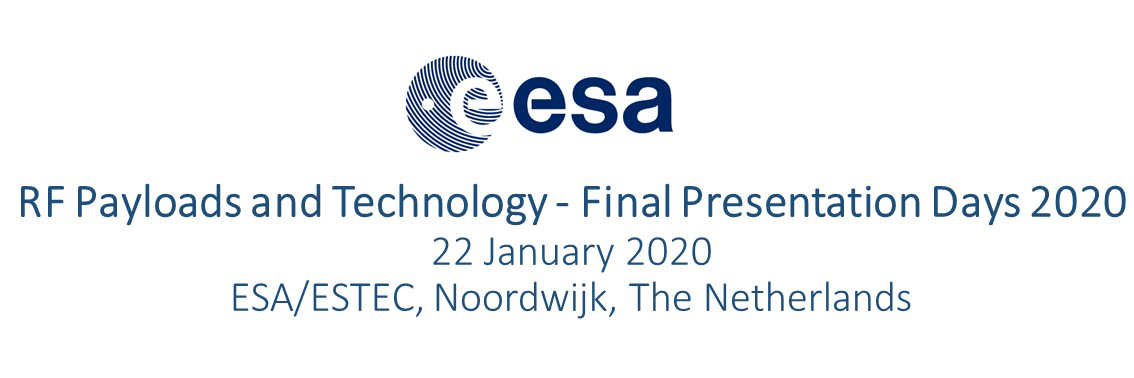Speaker
Description
Recently, a novel X-band multi-filar helix downlink antenna has been developed at RUAG Space. The antenna has been brought to an EQM status within an ESA GSTP program, and flight models are currently manufactured and tested for the MetOp SG satellites, as well as for several US missions. The antenna achieves a peak gain of around 6.5 dBi at EOC and an XPD better than 18 dB, which is superior to much larger aperture type antennas. In another recent ESA study (X-Band TT&C and K-Band downlink antennas for future LEO Missions) X-band TT&C antennas as well as Ka-Band downlink antennas have been designed using the knowledge from the above mentioned multi-filar helix design.
The X-Band TT&C antenna developed is a compact and low mass dual band design for 7.19-7.25 GHz (RX band) and 8.025- 8.400 GHz (TX Band) operation. It thus has a wider transmit frequency band than normally used. It has a hemispherical coverage with an EOC gain of better than -2 dBi to -1 dBi depending frequency. The antenna is fed through a conventional strip-line network to keep the height low and no protrusion inside the spacecraft needed. This antenna is now being manufactured as an EM activity in an add-on to the original study. For high power applications a waveguide fed antenna ca be envisaged.
The machining of the multi-filar helix is challenging, as the cross-section and the required tolerances are quite small. Hitherto, conventional CNC machining has offered a satisfactory yield. As the RF performance is excellent for the X-band antennas in the ESA GSTP program, it is tempting to scale to even higher frequencies. Recently, development was started with ESA/EOPP funding for a Ka-band (26 GHz) beacon and data downlink antenna for LEO earth observation missions. This antenna is one of the alternatives that were in the trade-off for Ka-band antennas in the study for X-Band TT&C and K-Band Downlink Antennas for Future LEO Missions. The frequency scaling makes the antenna very small; including radome and waveguide interface the total height is 76 mm, the interface diameter 50 mm, and the mass less than 130 g. The multi-filar helix radiator per se is only 44 mm tall, and the diameter is less than 2 mm. With such small dimensions, the machining now becomes very challenging. However a prototype of this antenna has been conventional manufactured with very good results. We have also looked in to the possibility to use additive layer manufacturing for the antenna.
| ESA Technical Officer | Maurice Paquay |
|---|

